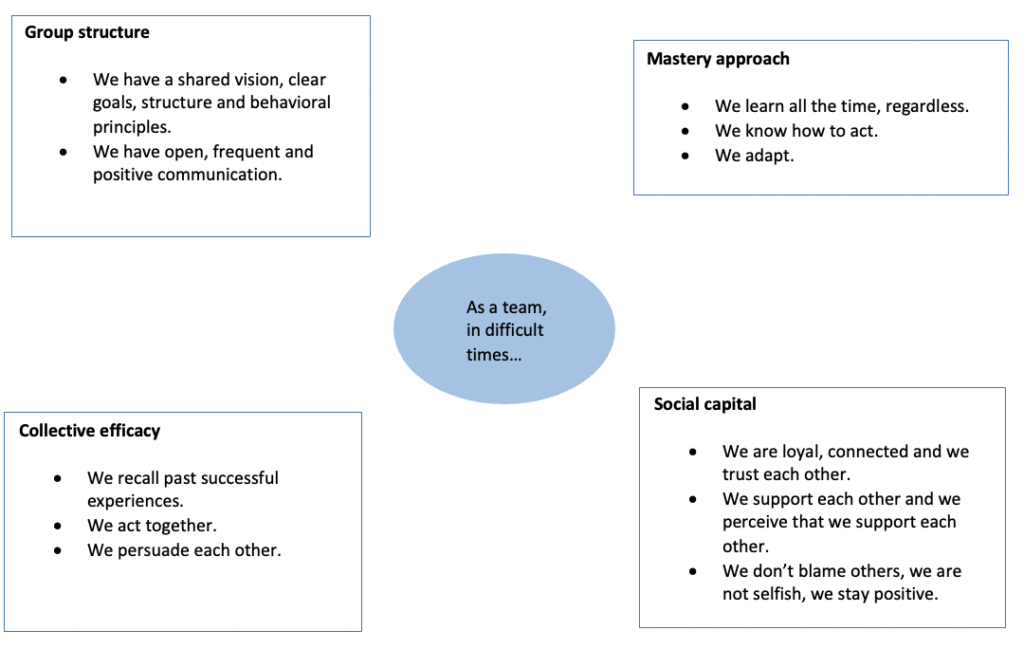Authors: Mar Rovira, Francesco Cuzzolin, Julio Calleja-Gonzalez, Igor Jukic, Baris Kocaoglu, Antonio Santo, Jaime Sampaio.
Athletes, coaches and sports organizations often use psychological resilience to explain athletes’ excellent performance. This is because by developing individual resilience, athletes result to be more focused, optimistic, exceedingly motivated, and reach their goals when facing pressure even in the case of failure. They can accept the fact that their effort does not always lead to success and are more receptive to failure. Highly resilient athletes believe in their ability to influence the course of events, look for the positive meaning of pressure and failure, and believe in their ability to control. Therefore, highly resilient athletes are more likely to succeed under tremendous pressures in competition (Bejan and Tonita, 2014).
Fletcher and Sarkar (2012) formulated the first sport specific definition of psychological resilience: “the role of mental processes and behavior in promoting personal assets and protecting an individual from the potential negative effect of stressors”. However, there is still no generally accepted definition, which leaves researchers unable to identify a consensus-driven operationalisation of resilience (Gupta, 2022). Nevertheless, all definitions of resilience have three core concepts: adversity, positive adaptation and bouncing-back and maintenance of wellbeing (Bryan et al. 2019). Those characteristics can be used to design good, applied programs for basketball players. (M. Rovira, personal communication, 2024). Below is an example extracted from an applied program that works on individual resilience.

Adapted from “Mental Performance Applied Program”. R.C.D.Espanyol. M.Rovira (2024).
Researchers have always focused on resilience from an individual perspective, but is the individual construct suitable for explaining the resilience at team level?
It is a well-known fact that complex interpersonal relationships, communication and competitive pressures exist in team sports, which we cannot ignore. Researchers found that teams often face stressors, such as poor interaction quality, poor communication channels, lack of back-up behavior, and negative organizational culture, group tensions, blame, and sudden slumps in collective performance (Bowers et al., 2017) among others. These stressors are different from the ones that individuals experience on a daily basis. Therefore, a focus on the individual’s resilience is not enough when conducting a resilience study or its application on the field.
Morgan and Fletcher (2013) defined team resilience in elite sport as a “dynamic, psychosocial process that protects a group of individuals from the potential negative effects of stressors they collectively encounter”. They further identified four main characteristics of team resilience: group structure, mastery of approaches toward adversity, social capital and collective efficacy.
We suggest that basketball coaches prepare the team for upcoming adversities in four ways, based on the four main characteristics of this model to build a resilient team. Below is an example of suggested objectives that coaches should work on in order to have the most resilient team possible. With this guidance and the collaboration of a sports psychologist, who can create an appropriate intervention, teams can build a solid resilience in their collective performance environment.

Practical homework
Adapted from “Mental Performance Applied Program”. R.C.D.Espanyol. M.Rovira (2024).
If you are a basketball player and you are reading this, we encourage you to do the next tasks.
Task 1: When things get complicated and difficult, what do you do and what do you think in order to find the best solution?

Task 2: When things get complicated and difficult, what does the TEAM do in order to find the best solution?

Basketball players need to work on their individual resilience in order to navigate their sports career with more certainty. Setbacks are part of the job and having good resilience strategies will help them succeed.
Basketball is a collective sport. Team resilience needs to be planned, communicated, accepted and build in a long-term live process where coaches are the leaders who guide the team members towards this goal.
Resilience is a skill and can be learned.
References:
Bejan, R., Tonita, F. (2014). The role of the resilience in Coping with stress in sports. Procedia Soc Behav Sci. 117: 402-7
Bicalho, C.C.F., Melo, G.F., and Noce, F. (2020). Resilience of athletes: a systematic review based on a citation network analysis. Cuadernos Psicol.Deporte 20, 26-40.doi:106018/cpd.391581
Bowers, C., Kreutzer, C., Cannon-Bowers, J., Lamb, J. (2017). Team resilience as a second-order emergent state: a theoretical model and research directions. Front Psychol. 8: 1360
Blanco-García, C., Acebes-Sánchez, J., Rodríguez-Romo, G., and Mon-López, D. (2021). Resilience in sports: sport type, gender, age and sport level differences. Int J. Environ. Res. Public Health. 18, 8196.




